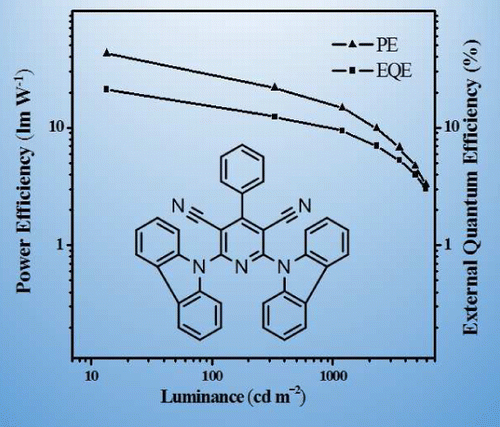
A novel blue thermally activated delayed fluorescence (TADF) emitter, CPC (2,6-di(9H-carbazol-9-yl)-4-phenylpyridine-3,5-dicarbonitrile), was designed and synthesized. By directly linking carbazole (to serve as electron-donor) and pyridine-3,5-dicarbonitrile (to serve as electron-acceptor), and distributing cyanogroups and carbazole groups at the para-position of pyridine core, CPC successfully achieves an extremely small singlet–triplet splitting and fairish photoluminescence quantum yield, thus can act as the highly efficient blue TADF emitter. The optimized organic light-emitting diode (OLED) based on 13 wt % CPC doped in mCP (1,3-bis(9H-carbazol-9-yl)benzene) host exhibits maximum current efficiency, power efficiency, and external quantum efficiency of 47.7 cd A–1, 42.8 lm W–1, and 21.2%, respectively, which are the best results in reported blue TADF-based devices up to date and even comparable with the best reported blue phosphorescent OLEDs. ACS Appl. Mater. Interfaces, 2015 |

